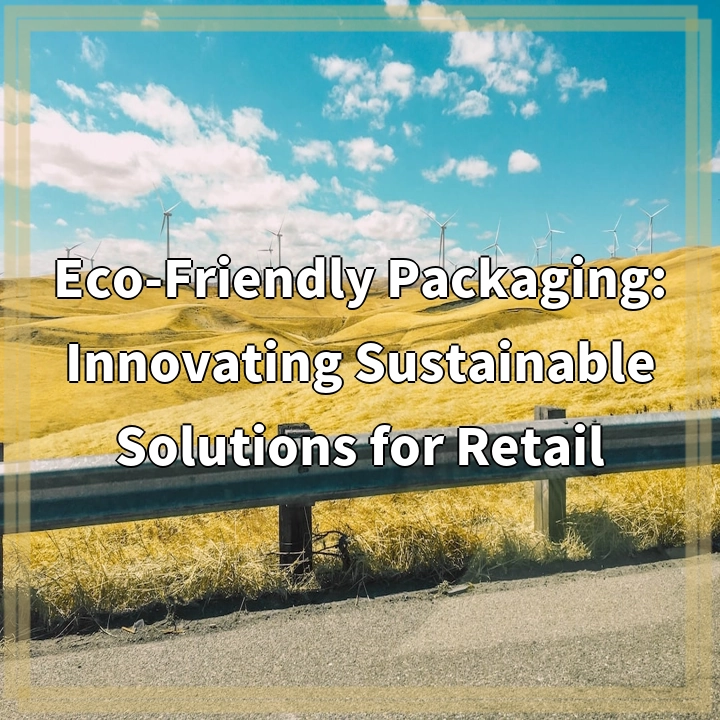
What is Eco-Friendly Packaging?
Eco-friendly packaging is a sustainable approach to retail packaging that aims to minimize environmental impact throughout the entire lifecycle of a product. It involves using materials and design strategies that reduce waste, conserve resources, and promote recycling and composting.
Real-World Problems Associated with Conventional Retail Packaging
Conventional retail packaging has long been a major contributor to environmental pollution and waste. Some of the key problems associated with traditional packaging include:
1. Excessive Use of Non-Recyclable Materials
Many retail products are packaged using materials that are difficult to recycle, such as multi-layered plastics or mixed materials. These packaging types often end up in landfills, taking hundreds of years to decompose.
2. High Carbon Footprint
The production and transportation of traditional packaging materials involve significant energy consumption and greenhouse gas emissions. This contributes to climate change and accelerates environmental degradation.
3. Limited Biodegradability and Harm to Wildlife
In some cases, conventional retail packaging may contain chemicals and toxins that are harmful to the environment and wildlife when they inevitably end up in ecosystems. This can lead to pollution of water bodies, soil, and air.
4. Over-Packaging and Excessive Waste
Many retail products are excessively packaged, using more materials than necessary. This not only creates unnecessary waste but also adds to the overall cost of production and transportation.
5. Lack of Consumer Awareness
Consumers often lack awareness about the environmental impact of conventional retail packaging. They may not be informed about the importance of choosing eco-friendly alternatives or may not have access to such options in the market.
Eco-Friendly Packaging as a Solution
Eco-friendly packaging offers solutions to these real-world problems, aiming to create a more sustainable and environmentally responsible retail industry. By adopting eco-conscious packaging practices, retailers can:
1. Use Recyclable or Biodegradable Materials
Eco-friendly packaging emphasizes the use of recyclable or biodegradable materials, such as cardboard, paper, or plant-based plastics. This enables easier recycling or composting at the end of a product’s life cycle.
2. Reducing Carbon Footprint
Through smarter design and material choices, eco-friendly packaging can help reduce energy consumption and greenhouse gas emissions associated with production and transportation.
3. Prioritize Environmental Safety
Eco-friendly packaging strives to eliminate harmful chemicals and toxins, ensuring that the packaging and its contents do not pose harm to the environment, wildlife, or human health.
4. Minimize Waste and Optimize Design
By focusing on minimalist and efficient design principles, eco-friendly packaging aims to reduce over-packaging and eliminate unnecessary waste, creating a more cost-effective solution for both retailers and consumers.
5. Educate and Empower Consumers
Eco-friendly packaging initiatives also include raising awareness among consumers about the importance of sustainable packaging choices and providing them with information and options to make informed decisions.
By promoting the adoption of eco-friendly packaging solutions, the retail industry can play a significant role in addressing environmental concerns, reducing waste, and creating a more sustainable future.

Solutions for Eco-Friendly Packaging
Here are some key solutions that eco-friendly packaging offers to address the real-world problems associated with conventional retail packaging:
1. Use of Recyclable and Biodegradable Materials
Eco-friendly packaging emphasizes the use of materials that can be easily recycled or biodegraded, such as cardboard, paper, or plant-based plastics.
2. Reduction in Carbon Footprint
Eco-friendly packaging focuses on smarter design choices and material selection to reduce energy consumption and greenhouse gas emissions associated with production and transportation.
3. Environmental Safety
Eco-friendly packaging aims to eliminate harmful chemicals and toxins, ensuring that the packaging and its contents do not pose harm to the environment, wildlife, or human health.
4. Optimization of Design to Minimize Waste
Eco-friendly packaging adopts minimalist and efficient design principles to reduce over-packaging and optimize material usage, resulting in less waste and lower costs.
5. Consumer Education and Empowerment
Eco-friendly packaging initiatives include raising awareness among consumers about the importance of sustainable packaging choices and providing them with information and options to make informed decisions.
By implementing these solutions, the retail industry can take significant steps towards creating a more sustainable and environmentally responsible approach to packaging.















